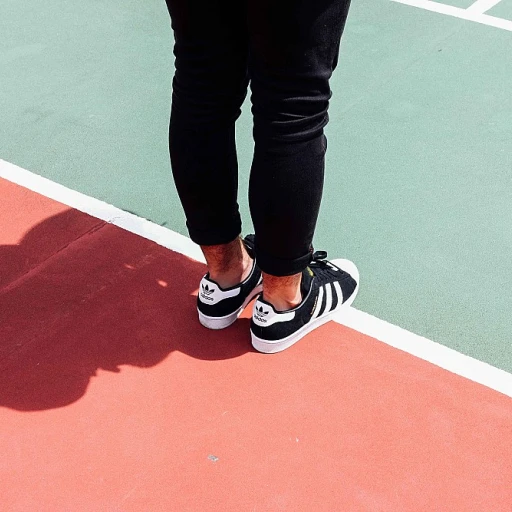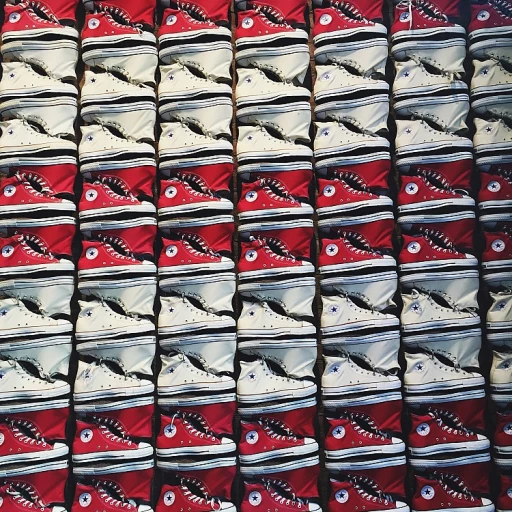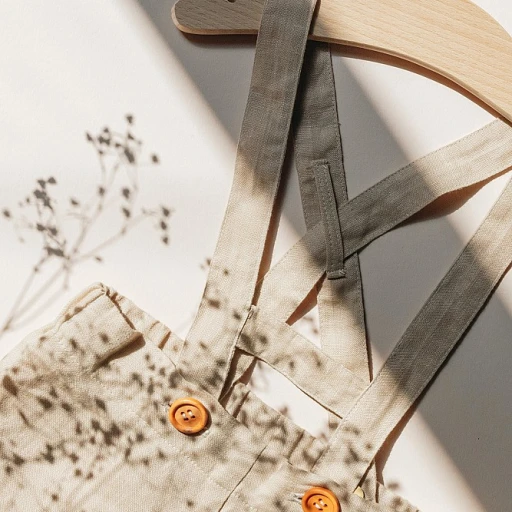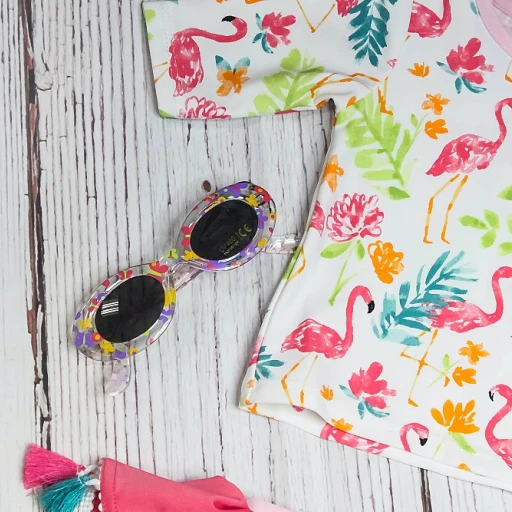
Why used baby clothes are a smart choice
Affordable option for growing kids
Buying brand-new baby clothes can quickly add up, especially given how fast babies grow out of their outfits. According to a report by the U.S. Department of Agriculture, middle-income families spend about $12,000 during their baby's first year. Opting for used baby clothes can save parents a significant amount of money. Brands like Mini Boden and Hanna Andersson offer high-quality items that are built to last, making them an excellent choice for secondhand purchases.Keeping quality at a lower price
You don't have to compromise on quality when you buy used items. Many parents sell clothes that have only been worn a few times, if at all. For example, Kidizen is a popular online marketplace where parents can buy and sell gently used kids clothes from their favorite brands. Parents love this platform for its wide selection and affordable prices.Another great place to shop is at local consignment stores. These stores often have a curated selection of clothes, ensuring that you get gently used items that are still in great condition. These are perfect places to find top baby brands at a fraction of their original cost.
Better for the environment
Used baby clothes are not just a smart choice for your wallet but also for our planet. The production of new clothes consumes vast amounts of resources. According to a study by the Ellen MacArthur Foundation, the fashion industry is responsible for 10% of global carbon emissions. When you buy used clothing, you help reduce the demand for new items and subsequently lower your family's carbon footprint. It's a small action that can make a big difference.For those interested in sustainable fashion, consider exploring how organic kids' wear can redefine fashion by reading more here.
Trusted recommendations
Experts, like Heidi Murkoff, author of the "What to Expect" series, point out the numerous benefits of purchasing secondhand clothing. Studies show that gently used clothes are often of comparable quality to new ones, especially if you stick with trusted brands.For affordable and high-quality used baby clothes, you might want to check out our Burt's Bees Baby Clothes Guide. This resource can offer you valuable insight and recommendations based on real experiences.
Top brands for gently used baby clothes
Trusted names in the world of used baby clothing
Mini Boden has been a favorite among parents looking for stylish yet comfy pieces for their little ones. Known for its quirky designs and high-quality materials, Mini Boden clothes maintain their appeal even after several washes. Their trademark playful patterns make them a top pick for second-hand shoppers.Another go-to brand is Hanna Andersson. Built to last, Hanna Andersson’s use of soft, organic cotton ensures the clothing’s durability. Parents often rave about these items still looking fresh and new, making it a solid choice for thrifty yet quality-conscious folks.When hunting for durability and style, Gymboree stands out. Gymboree clothes are popular for their adorable, age-appropriate designs. The brand’s sturdy construction makes it a frequent feature in the used baby clothing market.And let’s not forget Adidas for baby shoes. Renowned for comfort and durability, Adidas baby shoes are perfect for your tot’s first steps. These shoes remain in good shape even after heavy use, a key reason why they are in demand in second-hand stores.The big names in second-hand markets
Kidizen is a brilliant platform for parents to buy and sell gently used kids' clothes. It’s well-loved for the diversity in size and style, ensuring parents can find something that suits their child’s particular needs. The U.S.-based app allows users to filter based on several criteria, making it simpler to narrow down choices.For a more local option, families in the Bay Area speak highly of consignment stores like Goodwill and Once Upon a Child. Not only do these stores have rigorous quality checks, but they also contribute to the community, aligning with a growing concern for sustainability. Both stores ensure a high turnover rate without compromising on the quality of items.Turn to online dealers for rare finds
Have you ever searched eBay? You’d be surprised at the gems you can find at bargain prices! From Mini Boden’s stylish tops to Gymboree’s vibrant ensembles, eBay offers plenty of choices. Besides, the option of free shipping on many items makes it even more appealing.Another rising star in the second-hand baby clothing market is thredUP. This online thrift store not only provides a wide array of used baby clothes but is also committed to eco-friendly practices. ThredUP claims to have upcycled over 100 million items as of their latest report.Straying from the norm but staying in style
Ever thought of checking out Facebook Marketplace? New moms often clear out baby items in bulk, offering you a chance to grab a wardrobe’s worth of clothes at significantly low prices. The real attraction here is the diversity, as you might find top brands like Hanna Andersson and Mini Boden amidst local favorites.Another tip is to join local parenting groups. Known as Group Owners and Group Leaders, these admins often post about second-hand baby items. Members enjoy unrestricted discussions about where to find the best deals, from everyday health essentials to premium baby clothes.By focusing on these top brands and shopping spots, you can ensure your baby stays stylish and comfy without breaking the bank. The added bonus? Knowing you’re making an eco-friendly choice in the process! And if you ever find yourself with extra clothes, why not look into where to donate baby clothes? It’s a great way to keep the cycle going and help other families in need.Where to shop for the best used baby clothes
Finding the perfect spots for second-hand baby clothes
Buying used baby clothes can mean navigating through a sea of online and physical stores. But finding trusted sources can ease the process and ensure high-quality purchases. Popular online marketplaces like Kidizen and ThredUp stand out for their vast collections and ease of access. Both platforms feature detailed product descriptions, user reviews, and often offer free shipping, making them top choices for parents.Online marketplaces and local options
Kidizen is a favorite among parents for gently used baby clothes. This platform allows parents to both buy and sell items, creating a community of trusted users providing high-quality kids' clothes. ThredUp, another notable mention, provides a broad range of brands, including Hanna Andersson and Mini Boden, known for their durability and style. For those who prefer in-person shopping, local thrift stores and donation centers offer great alternatives. In the Bay Area, places like Goodwill and the numerous consignment shops boast a variety of baby sizes and styles.Trusted brands on resale platforms
Reputable brands like Gymboree, Adidas, and even more luxurious options like Gucci often feature prominently on these resale platforms. When browsing these brands, make sure to check the condition grading and reviews by other users to avoid any surprises.Searching for "Gucci baby clothes" on ThredUp or Kidizen can sometimes yield stellar finds at a fraction of the original cost.
Community groups and swapping events
Community-led events can also be a fantastic way to score gently used kids clothes. Local Facebook groups and parent forums often organize clothing swaps where parents can exchange outgrown clothes for new-to-them items. These events not only save money but also build a sense of community among parents.According to Heidi Murkoff, the author of the "What to Expect" series, swapping clothes within community groups not only helps to reduce waste but also fosters a supportive environment for parents navigating parenthood.
Retailers with second-hand sections
Some big brands are hopping on the resale bandwagon. Companies like Patagonia with their Worn Wear program and REI's used gear section are making it easier to purchase second-hand baby clothing from reliable sources. These retailers often restore products to nearly new condition, ensuring high-quality purchases.Purchasing used baby clothes from these sources can also provide peace of mind, knowing they adhere to the same safety standards as new clothing.
In conclusion, knowing where to shop for used baby clothes can make the journey seamless and enjoyable. Embrace the world of second-hand shopping and discover treasures for your little ones while contributing to a greener planet.
How to choose the right size for used baby clothes
Growing like weeds: getting the right size in used baby clothes
Finding the perfect size for used baby clothes can feel like solving a puzzle, but with a few tips and tricks, you can nail it every time. One of the first things to remember is that every brand sizes their clothes a bit differently. A “3-6 months” onesie from Gymboree might fit differently than one from Mini Boden or Hanna Andersson.
Sizing can also depend on the condition of the clothes. Gently used items might maintain their original sizes well, while others might have shrunk after multiple washes. When buying used, it’s often helpful to have a measuring tape handy. Measure your baby’s current clothes that fit well, and compare those to the listed measurements of the used items. This little step can save a ton of hassle later on.
Pay attention to the tags
Tags are your best friends. Some brands like Hanna Andersson and Adidas note the height and weight ranges on their tags, which can give you a clearer idea of the fit. When browsing online shops like Kidizen, many sellers provide detailed descriptions and actual measurements of the clothes, making it easier to pick the right size. Always check the size charts whenever available.
Consider adjustable or stretchy clothing
Used items that come with adjustable features like waistbands, cuffs, or shoulder straps offer better flexibility. Clothing made from stretchy material, such as cotton blends, can accommodate your child’s rapid growth. Gymboree and Hanna Andersson often offer these adaptable styles that can last through multiple growth spurts.
Buy bigger sizes to get more wear
Buying a size larger can be a savvy move, especially for babies who are growing quickly. Rolling up sleeves or pant legs can help oversized clothes fit better while still leaving room for growth. This tip is particularly valuable when you're just a few weeks away from a growth spurt—because when it hits, it hits hard. And this strategy often means you’re buying less frequently, saving both money and resources.
Keeping track of how sizes change
Babies grow fast, and keeping a small log of what size they’re currently fitting into versus what size they’ll likely need soon can be incredibly helpful. Apps like Wonder Weeks can help you predict growth spurts, giving you a heads up on when to start looking for larger sizes. Knowing your baby’s rough growth trajectory can limit the guesswork and help you keep pace with their ever-changing needs.
Expert tips from the pros
According to Heidi Murkoff, author of “What To Expect When You’re Expecting,” keeping an eye on your baby’s growth curves can be enlightening. As babies usually double their birth weight by five months and triple it by the end of the first year, Murkoff suggests buying used clothes in three-month intervals can be a helpful guideline. “Parents often get caught up in the cuteness of baby clothes and forget about practicality,” Murkoff says. “Sizing up wisely can save a lot of heartache.”
It's also worth noting that not all brands are equal in longevity and quality. A study by Ziff Davis revealed that some brands like Burt’s Bees Baby and Gymboree tend to run true to size and maintain their shape and durability longer, even after multiple washes.
For more insightful tips, don’t miss our other sections in this blog series, Green Threads can organic kids wear redefine sustainable fashion discusses the eco-friendly benefits!
The environmental impact of buying used baby clothes
Reducing carbon footprint by reusing baby clothes
Buying used baby clothes isn't just smart for your wallet; it's also pretty fantastic for the environment. One surprising fact is that the fashion industry is responsible for about 10% of global carbon emissions. When you choose to buy gently used kids clothing, you’re playing a part in reducing this impact. Even big names like Hanna Andersson and Mini Boden are getting on board with sustainable fashion.
Less water waste
Ever think about how much water it takes to produce new clothes? It’s a ton! The production process for a single cotton t-shirt can use up to 2,700 liters of water. Imagine how much that adds up when we're talking about baby clothes that are outgrown in just a few months. By opting for used items, you're also saving billions of gallons of water.
Cutting down on waste
Did you know about 85% of all textiles thrown away in the u.s. ends up in landfills or is burned? That’s insane when you can easily extend the life of baby clothes by buying used. Initiatives like Kidizen make it easier than ever to connect with parents looking to buy and sell used kids clothes.
Thrift shops to the rescue!
Thrift stores and online marketplaces have found a way to make second-hand shopping for baby clothes easy and accessible. Not only are you saving the environment, but you’re also supporting local businesses and communities. Plus, sites with free shipping options can save you even more money while you do good for the planet.
Supporting eco-friendly brands
Major brands are also catching onto the trend. Companies like Gymboree and Adidas are incorporating more sustainable practices, making it easier for you to feel good about the baby clothes you purchase, new or used.
Experts weigh in
Heidi Murkoff, author of the popular “What to Expect When You’re Expecting” series, notes that choosing used baby clothes is “one of the easiest ways for new parents to make a positive environmental impact quickly.” She emphasizes the benefits of reducing waste and conserving resources at an especially poignant time in your baby's early signs pregnancy week stages.
Final thoughts
In a report by Ziff Davis, the trend towards sustainable fashion, particularly in kids wear, is not just a flash in the pan. Parents are increasingly aware of their environmental footprint and are looking for ways to make a positive contribution. For more insights on baby clothing trends, you might find our detailed discussion on gucci baby clothes quite enlightening.
Expert insights on the benefits of used baby clothes
Expert opinions on opting for pre-loved baby attire
There's a growing consensus among experts that used baby clothes come with a host of advantages. In an interview with Heidi Murkoff, author of 'What to Expect When You're Expecting', she highlighted the practical and economical benefits of buying second-hand. According to Murkoff, 'Babies outgrow their clothes so rapidly that it's often hard to justify the cost of new items. Gently used clothes can be just as functional and look brand new after a wash.'
Backing this up, Kidizen, a popular platform for buying and selling children's items, reported that 90% of baby clothes sold are in excellent or like-new condition. A spokesperson for Kidizen stated, 'Parents love the idea of giving clothes a second life. It's easy on the pocket and better for the planet.'
From an environmental standpoint, shopping for used baby clothes significantly reduces your carbon footprint. The U.S. Environmental Protection Agency (EPA) notes that the textile industry is one of the major polluters, with millions of tons of textile waste ending up in landfills each year. Opting for second-hand baby clothes can help reduce this burden.
Perspectives from fashion industry insiders
Heidi Murkoff isn't alone. Fashion industry veteran Heidi Helveston from Gymboree also shared insights, saying, 'The market for used baby clothes isn't just eco-friendly; it's also trendy. Many parents are now more interested in sustainability and are happy to buy and sell gently used items.'
Billie Hansen of Mini Boden emphasized, 'Our customers love the quality and longevity of our clothes, which is why our second-hand market is thriving. Parents are deliberately choosing to invest in durable items that can be passed down through multiple children.'
Moreover, Ziff Davis, Inc., through Everyday Health, Inc., found in a survey that 75% of new parents favored recycled baby clothing over buying new ones, mainly due to the environmental impact and cost savings it offers.
Real-world experiences
Moms and dads everywhere are singing praises about their success with used baby attire. Sarah, a mom of two from the Bay Area, shares, 'I started buying used baby clothes for my first child. The savings were remarkable, and it felt good knowing I was doing my bit for the environment.'
Similarly, Laura in San Francisco found that shopping for used baby clothes opened up a treasure trove of high-quality brands like Hanna Andersson and Adidas at a fraction of the price. 'I found the cutest Mini Boden outfits that were practically new. It's like a treasure hunt every time I shop.'
For those uncertain about taking the plunge, it's worth noting the wisdom in everyday decisions from parents who've been there. Used baby clothes can offer the same comfort, style, and durability as new ones—but with added savings and environmental benefits.
Curious how to address common concerns when buying used baby clothes? Check out the next section for tips and tricks!













